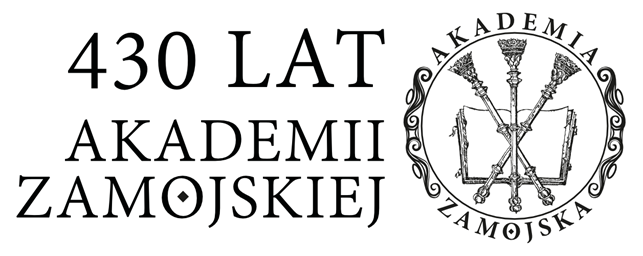Bernadas, J. M. A. C., & Ilagan, K., Journalism, public health, and COVID-19: Some preliminary insights from the Philippines. Media International Australia 2020, 177(1), 132-138.
DOI: https://doi.org/10.1177/1329878X20953854
Braun, V., & Clarke, V. Using thematic analysis in psychology, “Qualitative research in psychology” 2006, 3(2), 77-101.
DOI: https://doi.org/10.1191/1478088706qp063oa
Casero-Ripollés, A., Impact of Covid-19 on the media system. Communicative and democratic consequences of news consumption during the outbreak. Casero-Ripollés, Andreu (2020).“Impact of Covid-19 on the media system. Communicative and democratic consequences of news consumption during the outbreak”, El profesional de la información 2020, 29(2), e290223.
DOI: https://doi.org/10.3145/epi.2020.mar.23
Chua Y., Reuters Institute digital news report 2021: Philippines, Reuters Institute for the Study of Journalism 2021.
Cornia, A., Mancini, P., Ghersetti, M., & Odén, T., The Partisans, the Technocrats and the Watchdogs: Domestication in media coverage of the swine flu pandemic in 2009, “Journalism Studies“ 2016, 17(8), 1030–1050.
DOI: https://doi.org/10.1080/1461670X.2015.1040891
Dudo, A. D., Dahlstrom, M. F., & Brossard, D., Reporting a potential pandemic: A risk-related assessment of avian influenza coverage in U.S. newspapers, “Science Communication” 2007, 28(4), 429–454.
DOI: https://doi.org/10.1177/1075547007302211
Holland, K., Blood, R. W., Sweet, M., & Fogarty, A., A legacy of the swine flu global pandemic: Journalists, expert sources, and conflicts of interest, “Journalism” 2013, 15(1), 53–71.
DOI: https://doi.org/10.1177/1464884913480460
Hooker, C., King, C., & Leask, J., Journalists’ views about reporting avian influenza and a potential pandemic: a qualitative study, “Influenza & Other Respiratory Viruses” 2012, 6(3), 224–229.
DOI: https://doi.org/10.1111/j.1750-2659.2011.00319.x
Karlsson M. B., Participatory journalism and crisis communications: a Swedish case study of swine flu coverage, “Observatorio (OBS*)” 2010, 4(1).
Klemm, Celine, Das, Enny, & Hartmann, Tilo, Changed priorities ahead: Journalists’ shifting role perceptions when covering public health crises, “Journalism: Theory, Practice and Criticism” 2019, 20(9), 1223-1241.
DOI: https://doi.org/10.1177/1464884917692820
Kouzy R., Abi Joude J., Kraitem A., El Alam M. B., Karam B., Adib E., ... & Baddour K., Coronavirus goes viral: quantifying the COVID-19 misinformation epidemic on Twitter, “Cureus” 2020, 12(3).
DOI: https://doi.org/10.7759/cureus.7255
Krause N. M., Freiling I., Beets B., & Brossard D., Fact-checking as risk communication: the multi-layered risk of misinformation in times of COVID-19, “Journal of Risk Research” 2020, 1-8.
DOI: https://doi.org/10.1080/13669877.2020.1756385
La V.-P., Ho M.-T., Nguyen M.-H., Nguyen K.-L. P., Nguyen H.-K. T., Ho M.-T., Vuong Q.-H., Pham T.-H., Vuong, T.-T., Tran T., & Khuc Q., Policy response, social media and science journalism for the sustainability of the public health system amid the COVID-19 outbreak: The Vietnam lessons, “Sustainability (Switzerland)” 2020, 12(7).
DOI: https://doi.org/10.3390/su12072931
Leask J., Hooker C., & King C., Media coverage of health issues and how to work more effectively with journalists: a qualitative study, “BMC Public Health” 2010, 10(1).
DOI: https://doi.org/10.1186/1471-2458-10-535
Lee, Sangwon & Paik, Jihyun Esther, How partisan newspapers represented a pandemic: the case of the Middle East respiratory syndrome in South Korea, “Asian Journal of Communication” 2017, 27(1).
DOI: https://doi.org/10.1080/01292986.2016.1235592
Luther C. A., & Zhou X., Within the boundaries of politics: News framing of SARS in China and the United States, “Journalism and Mass Communication Quarterly” 2005, 82(4).
DOI: https://doi.org/10.1177/107769900508200407
Molek-Kozakowska K., Framing disease, ageing and death in popular science journalism, “Brno studies in English” 2016, 42(1).
DOI: https://doi.org/10.5817/BSE2016-1-3
Rossmann C., Meyer L., & Schulz P. J., The Mediated Amplification of a Crisis: Communicating the A/H1N1 Pandemic in Press Releases and Press Coverage in Europe, “Risk Analysis: An International Journal” 2018, 38(2).
DOI: https://doi.org/10.1111/risa.12841
Salvosa F., The digital new normal: Implications on journalism and journalism practice. “The Antoninus Journal” 2020, 6.
Secko D., Morel B. & Edimo A., An Exploration of the Lived Experience of African Journalists During the 2014 Ebola Crisis. Research report for Concordia University – Department of Journalism and the World Federation of Science Journalists 2014.
Shih T.-J., Wijaya R. & Brossard D., Media coverage of public health epidemics: Linking framing and issue attention cycle -toward an Integrated Theory of Print News Coverage of Epidemics, “Mass Communication and Society” 2008, 11(2).
DOI: https://doi.org/10.1080/15205430701668121
Spratt M., Science, journalism, and the construction of news: How print media framed the 1918 influenza pandemic, “American Journalism” 2001, 18(3).
DOI: https://doi.org/10.1080/08821127.2001.10739324
Thomas, Katherina & Senkpeni, Alpha Daffae (n.d.), What should health science journalists do in epidemic responses? AMA: Journal of Ethics, 22(1), E55-E60.
DOI: https://doi.org/10.1001/amajethics.2020.55
Thompson E., Communicating a Health Risk/Crisis: Exploring the Experiences of Journalists Covering a Proximate Epidemic, “Science Co” 2019.
DOI: https://doi.org/10.1177/1075547019878875


 Język Polski
Język Polski
 English
English
 Русский
Русский
 Slovenčina
Slovenčina
 Hrvatski
Hrvatski
